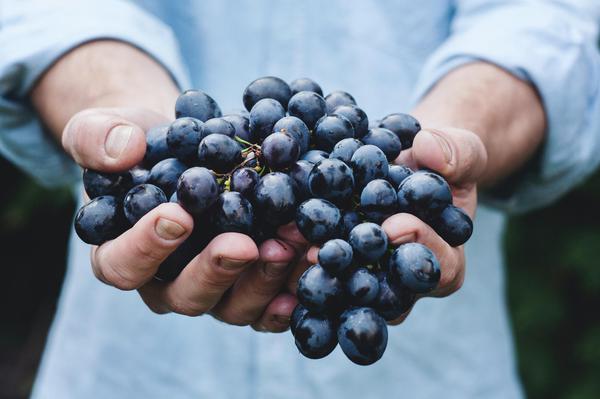Georgia has a rich history of winemaking that spans over 8,000 years. The country is considered the birthplace of wine, with evidence of winemaking dating back to ancient times. Georgian winemaking methods are distinct from those used in other wine-producing countries, with a focus on natural and traditional techniques. This article explores the unique methods of Georgian winemaking and their significance in the country's cultural heritage.
Traditional Winemaking Methods
Georgia's traditional winemaking method involves the use of clay vessels called kvevris. Grapes are crushed by foot and then placed in the qvevri along with their skins, stems, and seeds for fermentation. The kvevris are then sealed and buried in the ground for several months, allowing the wine to age and develop its unique flavor. This method produces a range of wines, including amber and red wines, and is recognized by UNESCO as an intangible cultural heritage of humanity.
Modern Winemaking Techniques
In recent years, Georgian winemakers have also started to use modern techniques alongside traditional methods. This includes the use of stainless steel tanks for fermentation and temperature-controlled equipment for aging. The combination of modern and traditional methods has resulted in a wide range of wines, from traditional kvevri wines to modern blends and varietals.
Georgian Grape Varieties
Georgian grape varieties are unique and diverse, with more than 500 varieties grown throughout the country. Some of the most famous grape varieties include Saperavi, Rkatsiteli, Kisi, and Khikhvi, each with its own distinctive characteristics and flavor profile. Saperavi, for example, is a red grape variety that is high in tannins and acidity, making it well-suited for aging in oak barrels. Rkatsiteli, on the other hand, is a white grape variety that is often used to make dry white wines with a crisp acidity and subtle flavors of apple and pear. The diversity of Georgian grape varieties is one of the key factors that makes Georgian wine unique and sought after by wine lovers around the world.
Wine Regions of Georgia
Georgia is divided into several wine regions, each with its own unique characteristics. Kakheti is the largest and most famous wine region, known for its dry and semi-sweet wines. Kartli is another important wine region, famous for its use of traditional clay vessels, called kvevris, in the winemaking process. Other regions include Imereti, which is known for its white wines and sparkling wines, and Racha, which produces semi-sweet red wines. Adjara, located on the Black Sea coast, is a newer wine region that produces mainly white wines. Each region has its own distinct grape varieties and methods of winemaking, resulting in a diverse range of Georgian wines.
Wine Tourism in Georgia
Georgia's winemaking traditions and unique methods have attracted an increasing number of visitors interested in wine tourism. Many wineries across the country offer tours and tastings, providing visitors with an opportunity to learn about Georgian wine and culture. Wine enthusiasts can visit different wine regions and taste a variety of wines, including those made using traditional methods in kvevris. Wine tourism has become an important part of the Georgian economy and has helped to promote the country as a unique and vibrant tourism destination.
Preserving Georgian Winemaking
Georgia's winemaking traditions have been passed down from generation to generation for thousands of years, making it an integral part of the country's cultural heritage. To preserve these unique techniques and methods, efforts are being made by winemakers, organizations, and the government to promote traditional Georgian winemaking practices. Sustainable winemaking practices, such as using organic farming techniques and limiting chemical use, also play a role in preserving Georgian winemaking heritage for future generations to enjoy.
Conclusion
Georgia's unique methods of winemaking have been preserved for centuries. As a cradle of wine, Georgian wines have been cherished globally. From traditional kvevri to modern techniques, there are many unique features that make Georgian wines stand out. The country's different wine regions each have their own characteristics, and wine tourism is on the rise. However, preserving Georgian winemaking traditions is important, and sustainable winemaking is a crucial part of preserving this heritage. Overall, Georgian winemaking is a unique and significant part of the global wine industry, and the country is poised for continued growth as a wine tourism destination.


 From Qvevri to Bottle
From Qvevri to Bottle
 Qvevri
Qvevri
 Georgian Ancient Winemaking
Georgian Ancient Winemaking
 UNESCO-Listed Qvevri Wine-Making
UNESCO-Listed Qvevri Wine-Making
 Soviet Impact on Georgian Winemaking
Soviet Impact on Georgian Winemaking
 The Renaissance of Georgian Winemaking in the Post-Soviet Era
The Renaissance of Georgian Winemaking in the Post-Soviet Era
 Wine Bottling and Storage
Wine Bottling and Storage
 Qvevri Wine Fermentation Process
Qvevri Wine Fermentation Process
 Wild Yeasts in Georgian Winemaking
Wild Yeasts in Georgian Winemaking
 Influence of Terroir on Georgian Winemaking
Influence of Terroir on Georgian Winemaking












